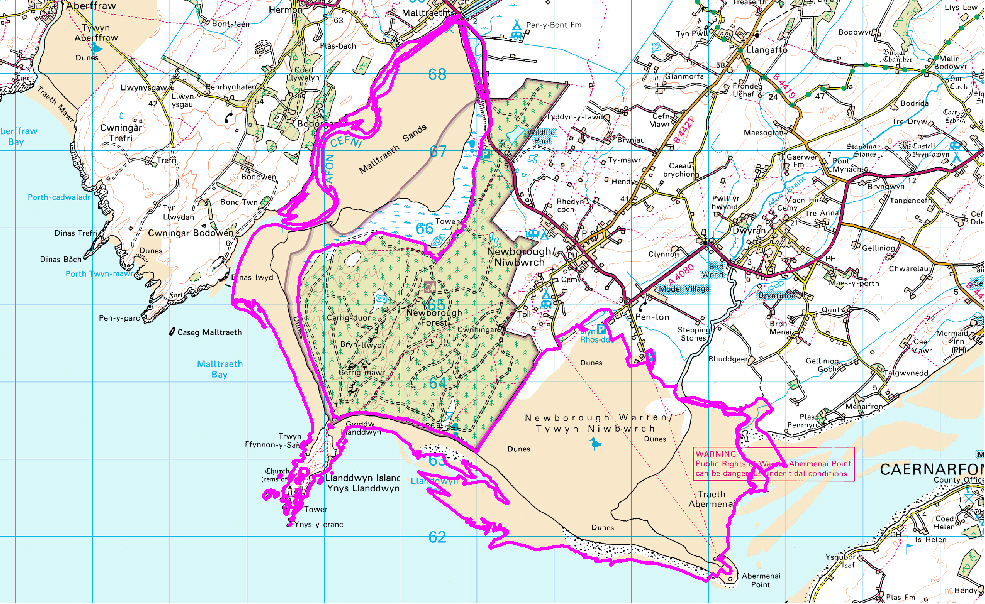

The dune flora is best seen during the spring and early summer and includes a fine suite of orchids including early purple orchid, bee orchid, marsh heleborine and lesser twayblade. There is a diverse invertebrate fauna, particularly of species dependent on warm bare sand. Skylark are still common here.
The esturies of the Afon Cefni and the Afon Braint diplay fine development of saltmarsh including pioneer glasswort (Salicornia spp) and sea lavender (Limonium spp) and sea rush (Juncus maritimus). The mudflats support important wintering populations of pintail, wigeon, teal, redshank, dunlin etc.
A small lake, Llyn Rhos-du, occurs at the landward side of the dunes near Pen-lon. A hide provides opportunity to watch tufted duck, wigeon, heron and many other birds.
The reserve includes the beaches and the island - Ynys Llanddwyn - which attract thousands of visitors every year. There is a small exhibition, in the old Pilots' Cottages on the island, describing the natural and human history of the area.
There are several
public rights of way across the dunes giving good access to examples of
all the habitats, and a route across the Braint estuary at low tide.
More general access to the dunes is not encouraged - particularly when
dogs are involved in the nesting season. There is also access for the
public on the beaches and intertidal areas and surfaced paths around
the Ynys Llanddwyn. See
walks
Much of the dune land is grazed with Welsh Mountain ponies, cattle and sheep at various times to maintain short dune vegetation. As part of a long-standing agreement with wildfowlers, the Cefni Estuary has a winter wildfowling zone under a strict permit system and the Braint Estuary is a wildfowl sanctuary zone.
Some 700 hectares of dunes adjacent to the NNR was afforested between 1947 and 1965 in an effort to stabilise the formerly mobile sands - though the demise of rabbits due to myxomatosis and other changes in the ecology of the dunes seems to have achieved this elsewhere. The conifer plantation has smothered the original dune vegetation in a thick layer of needles, prevented natural movement of sand and lowered the ground water. But it is a pleasant environment for walking and cycling, and not without some recent wildlife interest of its own, including woodland fungi and the recently introduced red squirrel, so its management (by the Forestry Commission) is a controversial subject.
See also Newborough Warren - Ynys Llanddwyn SSSI
See also First-Nature NNR guide